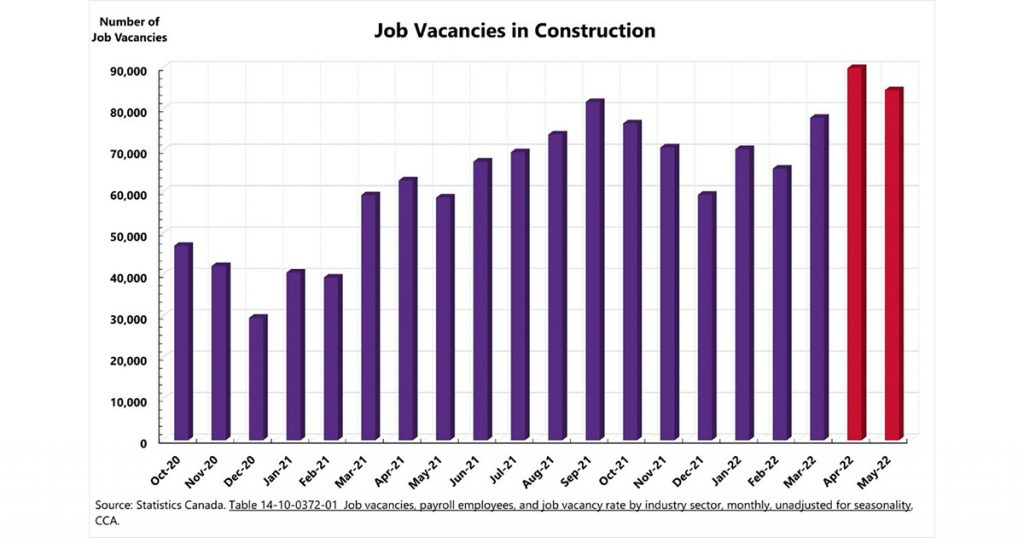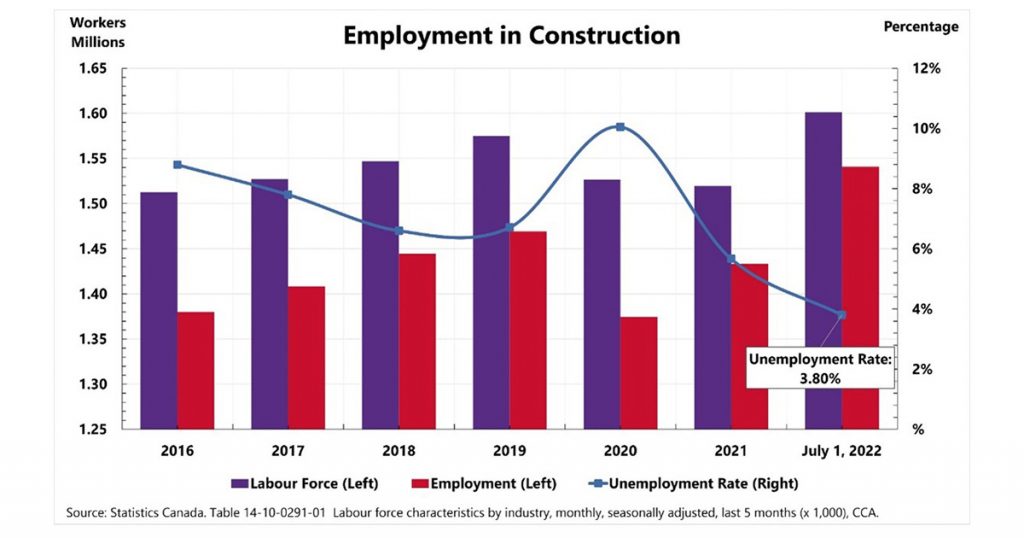
Economic update: Industry sounds alarm over construction job vacancy rates
The demand for labour in non-residential construction is increasing thanks to the post-pandemic boom experienced by the construction industry.
With the number of job vacancies currently sitting at 84,585 and the value of monthly building permits reaching $3.9 billion – a 17 per cent increase over its highest recorded level seen since 2019, the number of workers required to successfully complete projects needs to drastically increase in the coming years.
BuildForce Canada forecasts that given the current demand for non-residential construction, the industry will need to add 113,100 workers by 2027. The first 35,500 workers will be needed to meet the rising demand, while the remaining 77,600 are required to make up for the same number of workers set to retire over the same period.

The latest number of vacancies in the construction industry reached an all-time high in April and May of this year.
This may prove difficult in current market conditions. According to a report by Statistics Canada, the construction industry documented its lowest ever level of unemployment this July (with records going back to 1987). Low levels of unemployment indicate the supply of workers is insufficient to fill current vacancies. Given this trend, the construction industry is already facing the negative impacts of low unemployment, which include greater difficulties in recruitment and retention, lower productivity gains, and rapid wage growth.

The unemployment rate (blue line) remains at its lowest level since 1987 despite construction reporting high labour force activity (purple bar).
The construction sector contributes $152 billion, or 7.5 per cent of Canada’s GDP, annually. The industry has immense growth potential but is facing fierce competition for talent.
CCA has been working on several initiatives to build a pipeline of skilled, unskilled, and professional talent. Our Talent Fits Here initiative is a national public awareness campaign designed to attract workers by positioning construction as a career of choice. We are also advocating for changes to the Canadian immigration system to facilitate the entry of skilled immigrants interested in working in the construction sector.
The future of Canada’s economic growth depends on our ability to attract, develop, and retain top talent.

